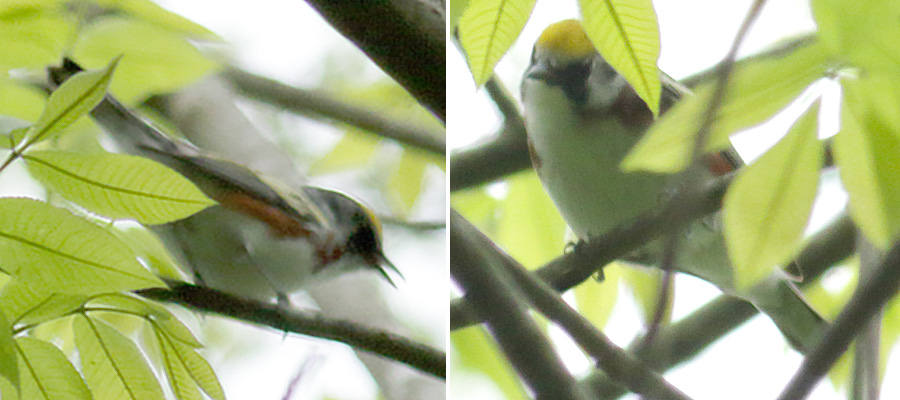
Chestnut-sided Warbler
It was raining until about 9:30 this morning, but the forecast was for the rain to end until the evening. After seeing a few non-resident, migrating warblers up on the Blue Ridge Parkway yesterday (5/9) afternoon, I wanted to do some birding at Ridgeview Park in Waynesboro. Ridgeview Park can be a very good place to see migrating warblers, unless it is on a weekend day when there are lots of "walker-talkers" on the paths in the wooded area. There are two sections of the wooded area. The first, and best for warblers, is adjacent to the length of the soccer fields. The other area is separated from the first area by a path from the west end of the soccer fields, and runs along the river. This second area does support warblers as well, but I have seen more woodland birds and fewer warblers there than in the other area. Both areas have a fairly wide, dirt, main walking path, and numerous narrow paths through the brush - great for finding warblers off the main path.
I parked on a side street that runs into the first wooded area, and started my hike under dark skies. Oh, no! There were two workmen with weed eaters cutting and widening all of the paths, in addition to all the noise. Well, there goes the neighborhood! The noise probably scared many of the birds away from the park or into hiding. I walked past the workmen, and got very quick views of a Chestnut-sided Warbler, a Blackburnian Warbler, and a female Black-throated Blue Warbler.

Chestnut-sided Warbler
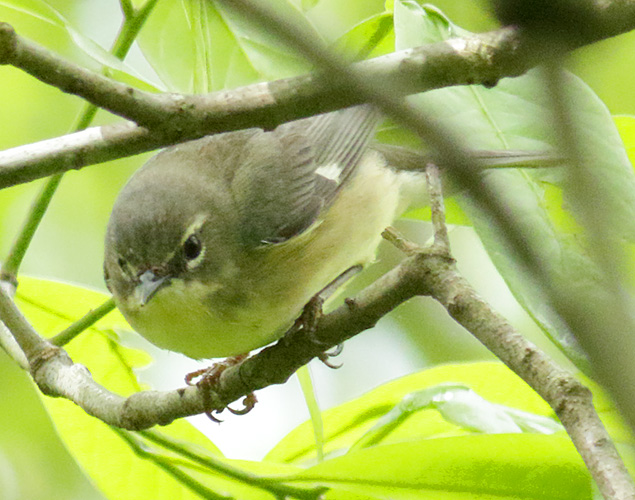
Female Black-throated Blue Warbler
I quickly hiked to the second area, but only saw a few common, woodland birds there.
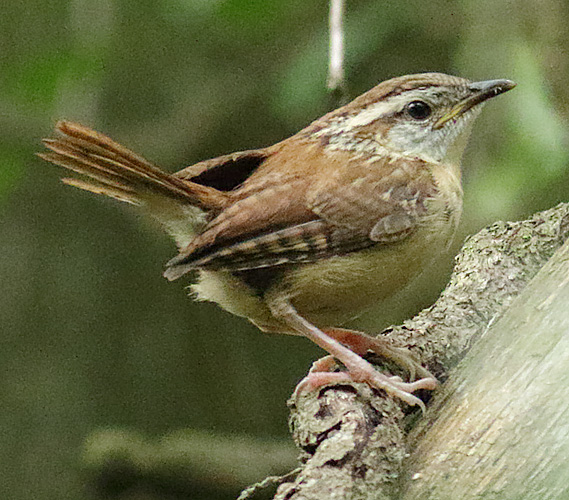
Carolina Wren
And then it started to rain again. I took cover under a small tree along the main path, waited for about 10 minutes for the rain to stop, and then headed back to the first section of the wooded area. By that time, the two workmen were almost at the path between the two sections, and they stopped to let me pass. Well, perhaps the birds would come out again. No luck - now there was a third workman with a loud leaf blower who was blowing all of the weedeater debris off of the paths. I took a detour on one of the formerly narrow, but now wide, path, and got a quick look at a thrush before it scurried back into the brush. It could have been a Swainson's Thrush, but it looked more like a Gray-cheeked Thrush to me. It was so dark, however, that seeing plumage colors was a challenge, and it was too noisy for me to stick around and wait for the thrush to reappear.
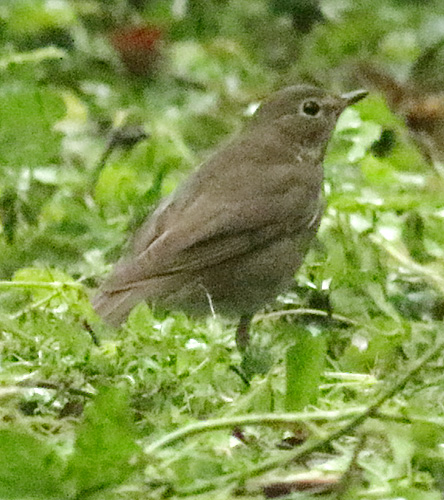
Gray-cheeked Thrush (?)
I can never figure out why park management (especially city, but to a lesser extent county, state, and federal) promote nature, and then have no clue how and when to manage wildlife habitat. Last autumn, men on riding lawn mowers were mowing the main dirt path in Ridgeview Park wooded area during peak warbler migration. I was in Hendersonville, North Carolina last June and had read that birders were complaining about the main park there. It was the primary stopping point in that area for migrating warblers, and park management was planning on cutting down a large section of the wooded area to make a disc golf course. Sorry about all this soap box ranting.
I thought about going up on the Blue Ridge Parkway, but I could see that it was engulfed with fog, so I went to Sherando Lake. I hadn't been there for a couple of years, and although it's not a great birding site, there can be a few warblers as well as water and shore birds there, especially when the lake isn't crowded with boaters and swimmers. I went first to the dam end of the lake, where I heard several Red-eyed Vireos, and saw about a dozen Spotted Sandpipers.
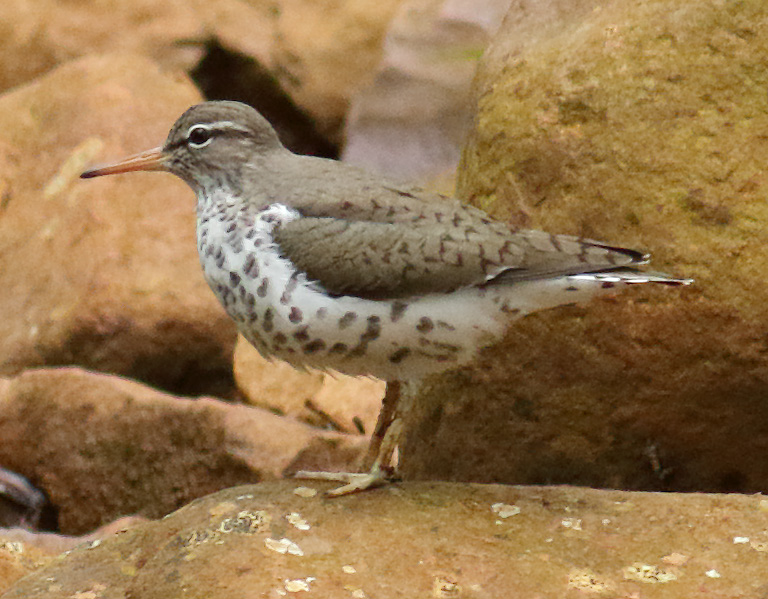
Spotted Sandpiper
I heard birds near the trail along the east side of the lake. I hiked there and stopped when I saw a Black and White Warbler high up in a tree.

Black and White Warbler
And then some commotion caught my attention. Two Worm-eating Warblers were gathering nesting materials.
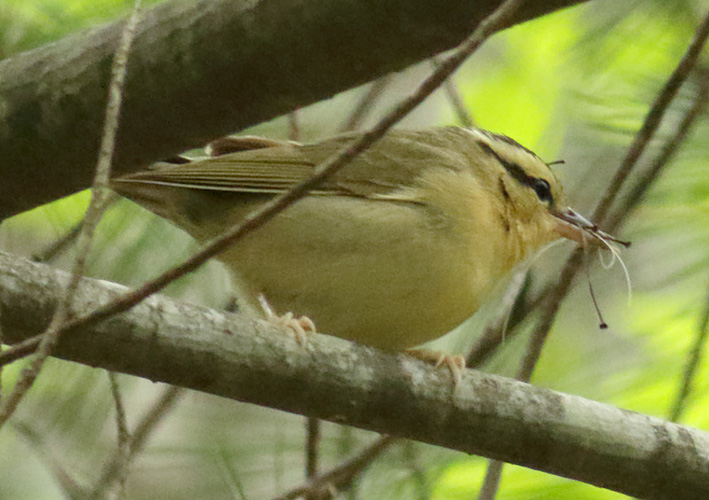
Worm-eating Warbler

Worm-eating Warbler
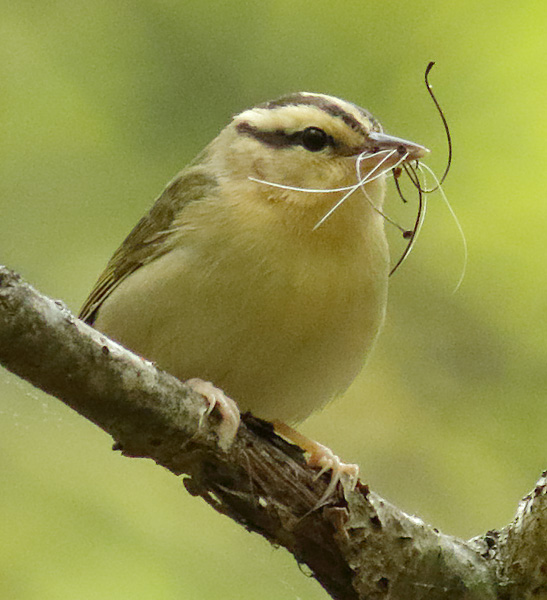
Worm-eating Warbler

Worm-eating Warbler
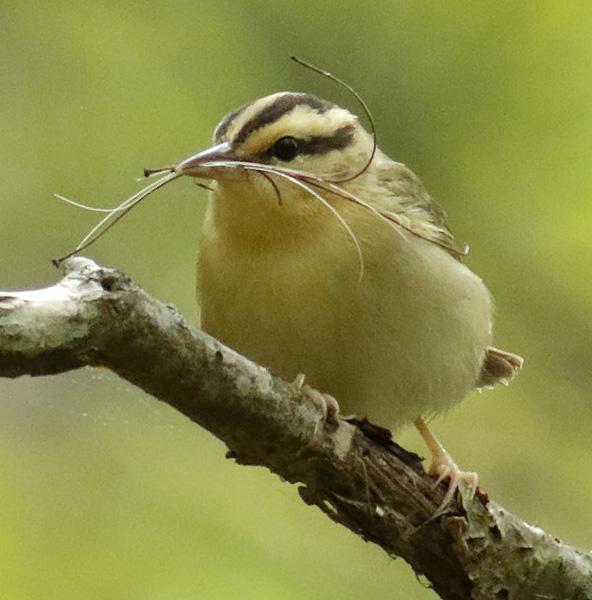
Worm-eating Warbler
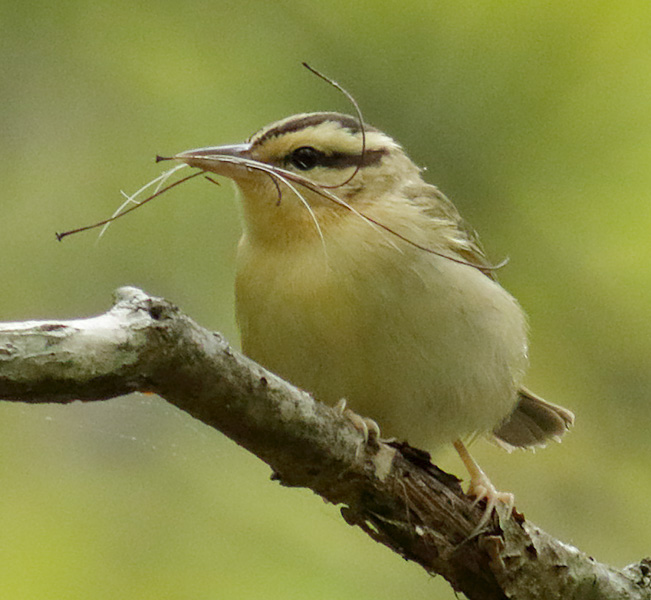
Worm-eating Warbler
I drove to the main parking lot and saw a few woodland birds there. A Gray Catbird was stalking a bug, and in all the many years I have seen American Robins, this was the first time that I can recall ever seeing their rufous underwing coverts.
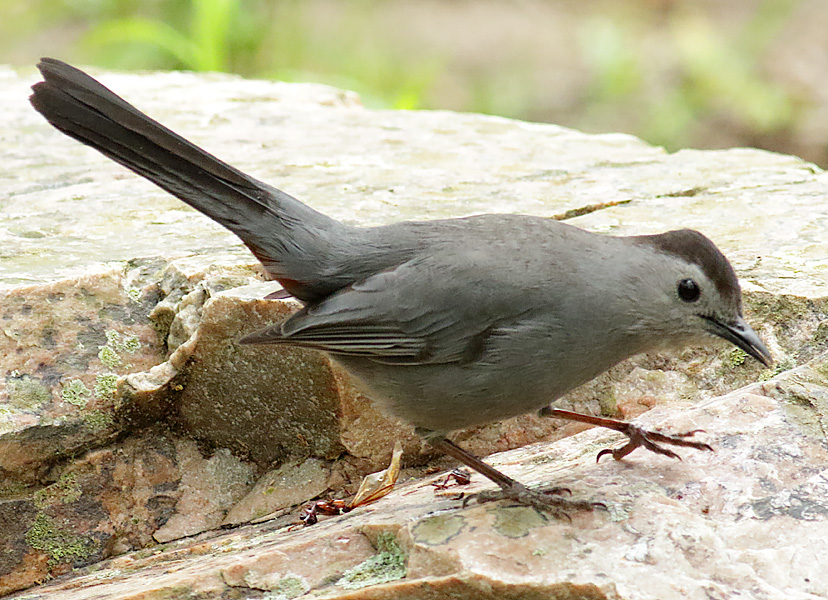
Gray Catbird

Gray Catbird

American Robin
I hiked a bit on the trails on the west side of the lake, and saw more Black and White Warblers, Red-eyed Vireos, and American Redstarts.
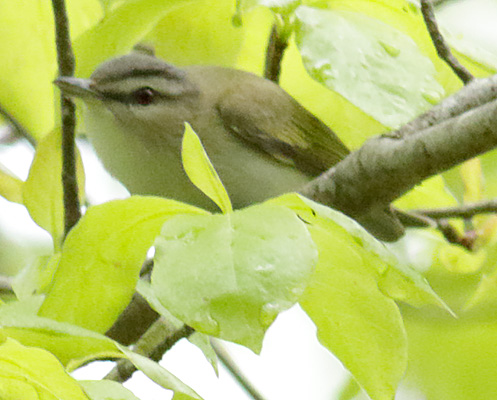
Red-eyed Vireo
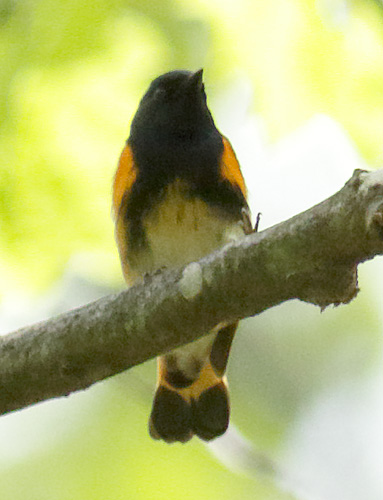
American Redstart
Before leaving Sherando Lake, I watched some Sandpipers in a shallow area of the lake near the parking lot. A Spotted Sandpiper was protecting its foraging spot from other Spotted Sandpipers, but didn't mess with a single [solitary :-)] Solitary Sandpiper that was also there.
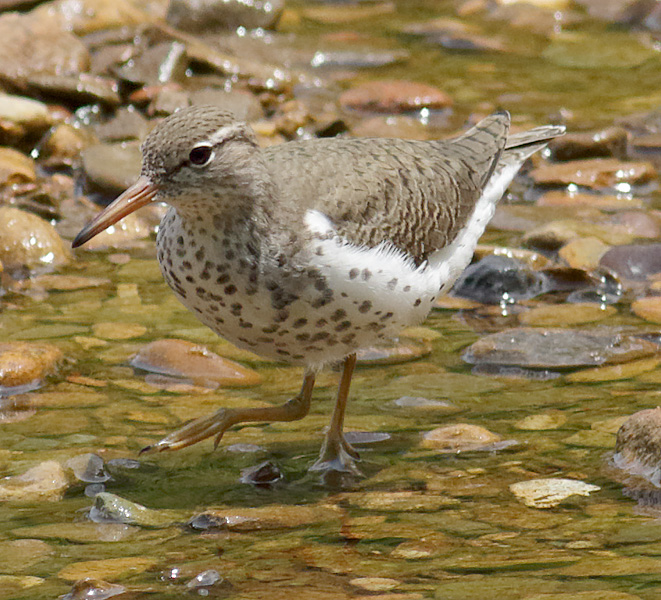
Spotted Sandpiper

Spotted Sandpiper
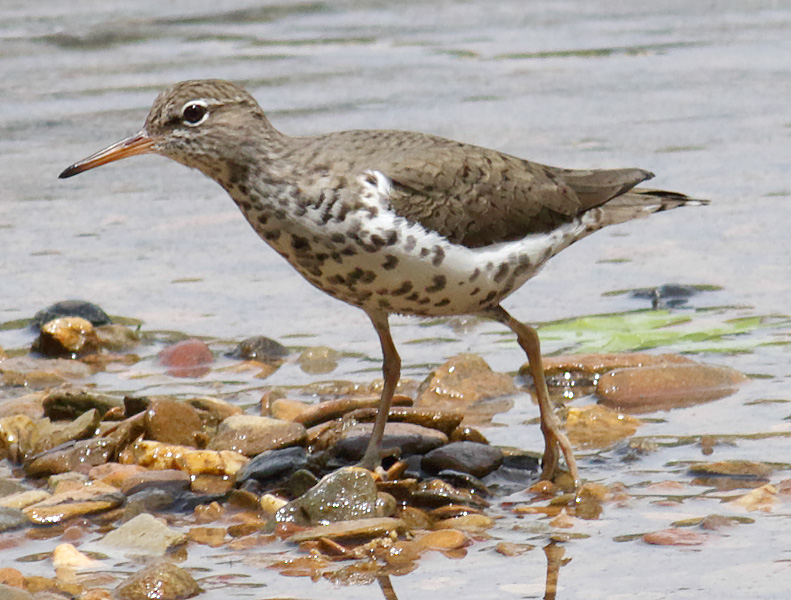
Spotted Sandpiper
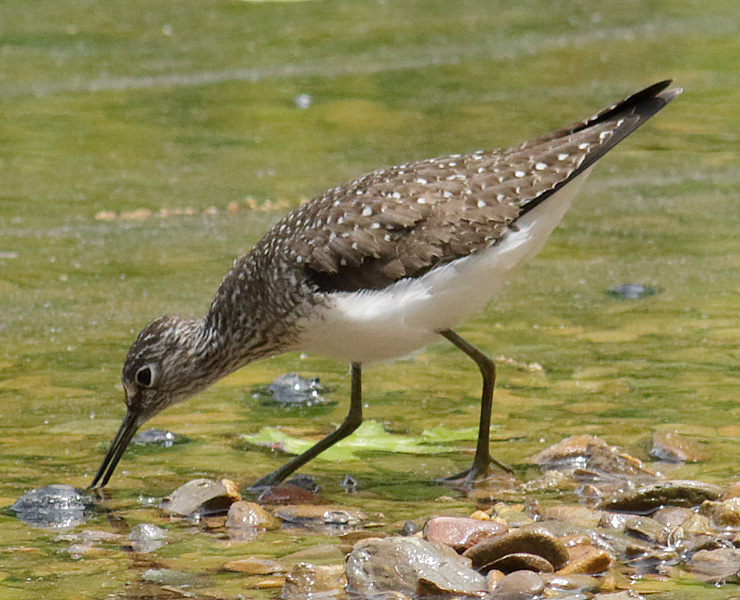
Solitary Sandpiper
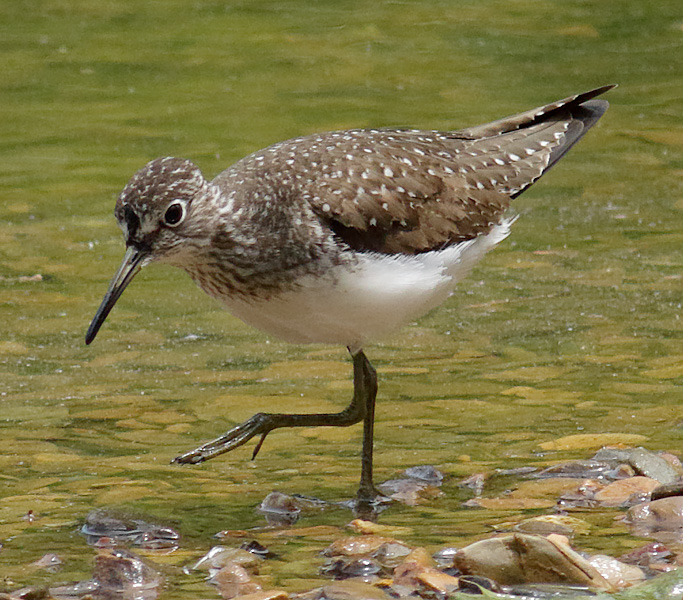
Solitary Sandpiper
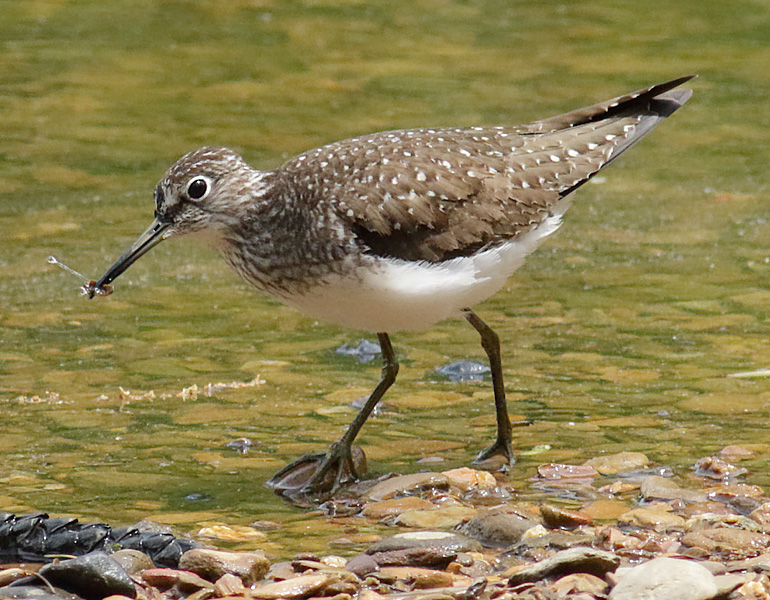
Solitary Sandpiper
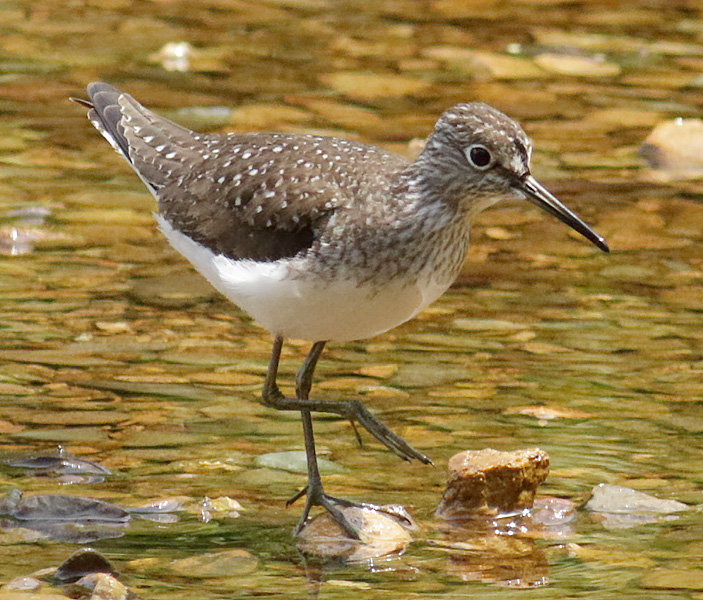
Solitary Sandpiper
By now, it was getting close to mid-afternoon, the sun was starting to come out, and the fog on the parkway had dissipated. I drove up Route 664 to Reids Gap, and stopped at Hickory Springs Overlook (mm 12). There were American Redstarts and Cerulean Warblers, lots of other birds such as Indigo Buntings and Eastern Towhees, a Scarlet Tanager, and a Broad-winged Hawk rested for a minute high up on a tree branch.

American Redstart
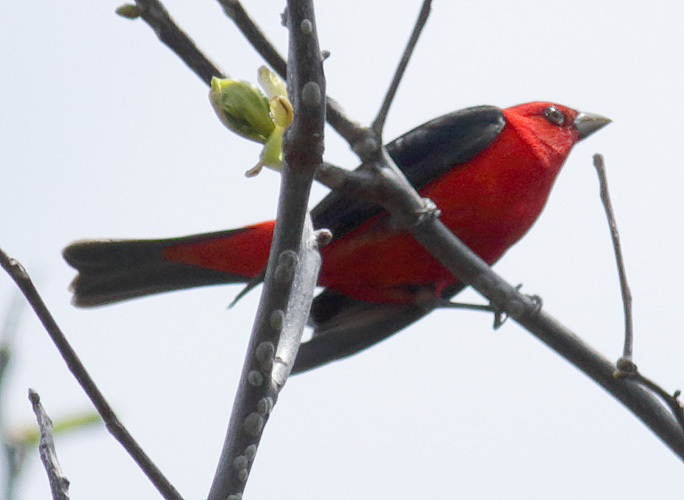
Scarlet Tanager
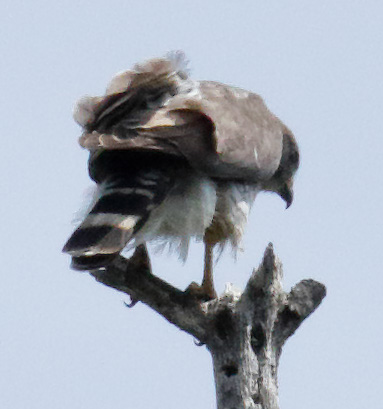
Broad-winged Hawk
My next stop was at the large cirque between mm 7 and mm 8. Again, there were American Redstarts and Cerulean Warblers, but the sun had also brought out lots of motorcyclists, and the loud noise was more than I wanted to deal with. I drove down to about mile marker 4 where I could exit onto Route 610 and drive north and parallel to the parkway. I stopped a little less than a mile down the road when I heard birds. I heard a Hooded Warbler, and saw more Cerulean Warblers, American Redstarts, and a Yellow-rumped Warbler.
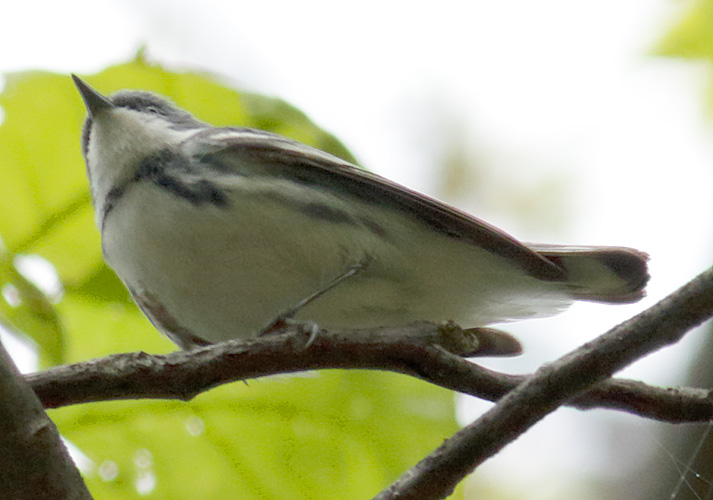
Cerulean Warbler

American Redstart
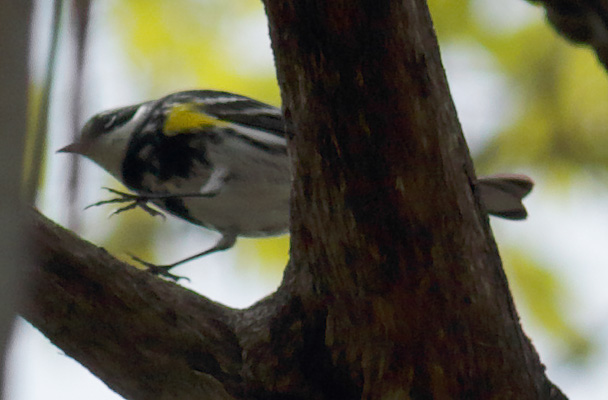
Yellow-rumped Warbler
But it was an Ovenbird that stole the show at that stop.
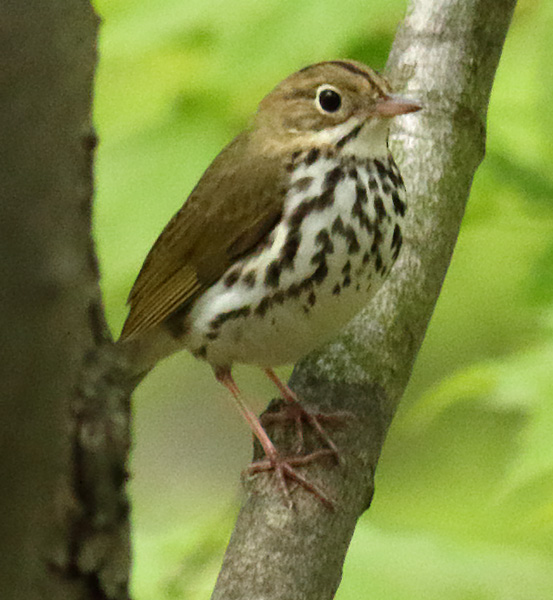
Ovenbird
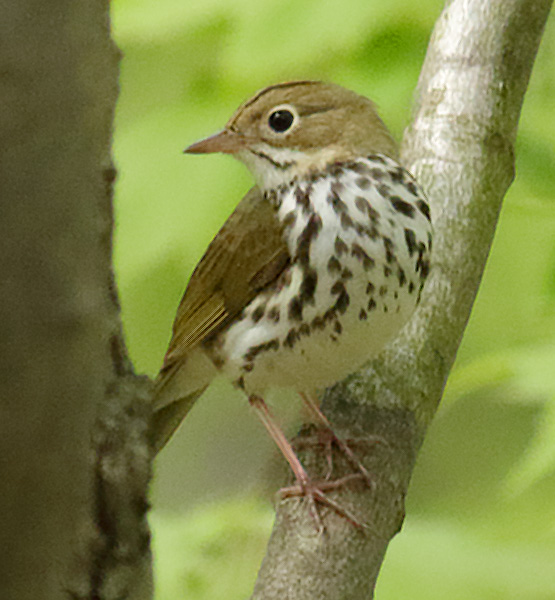
Ovenbird
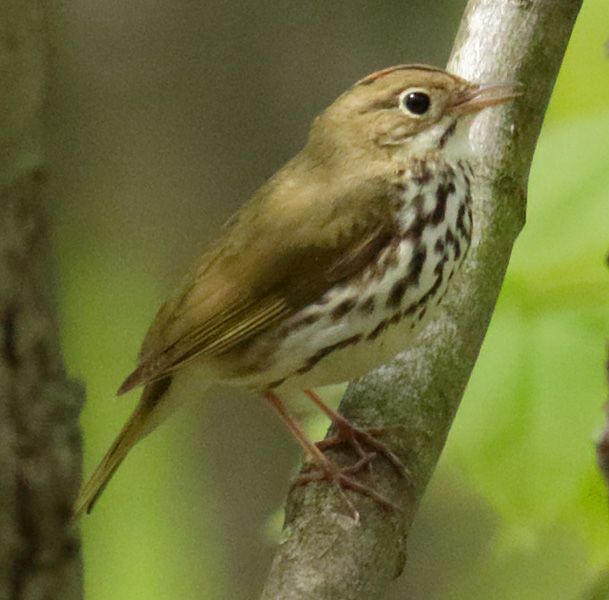
Ovenbird
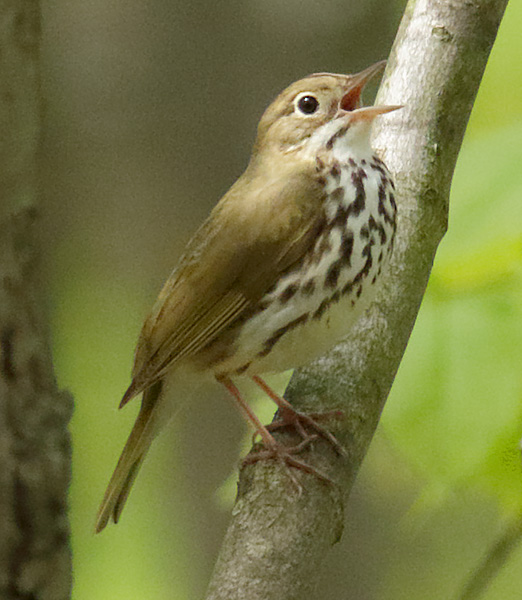
Ovenbird

Ovenbird
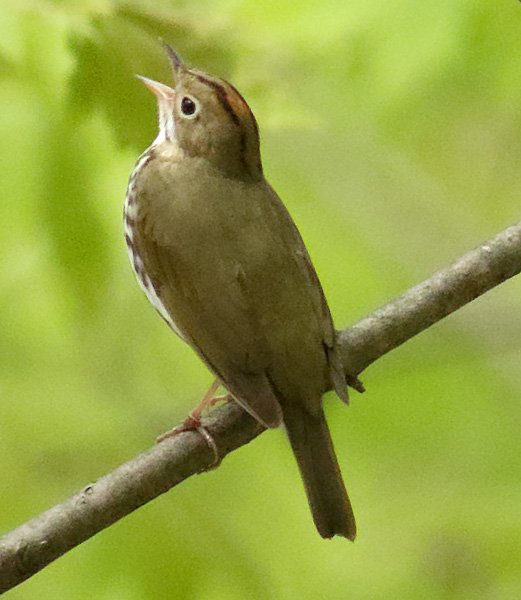
Ovenbird